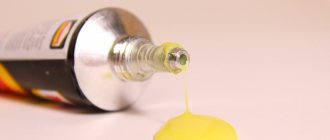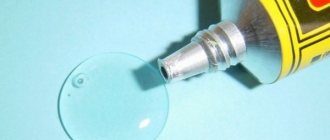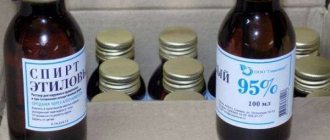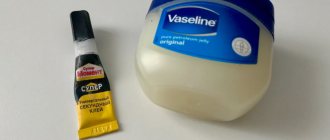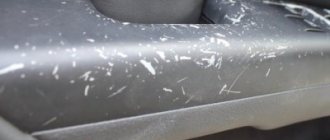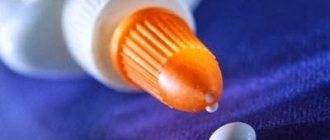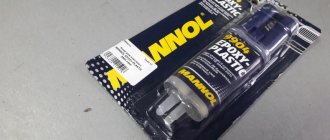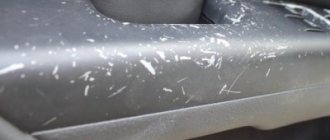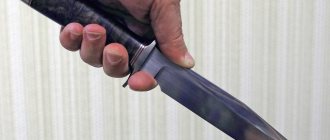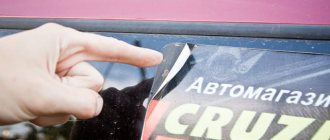Superglue is used for gluing various parts; it helps to quickly fix damage and creates a reliable result. But if it gets on an unwanted area, it is often difficult to remove the drops due to the speed at which the layer hardens. When the stain remains on a plastic base, the difficulty increases due to the fragility of the material. We will discuss in detail how to remove super glue from plastic without harming the base below.
Non-aggressive methods of removal
Many types of plastic have a fragile structure; a slight aggressive impact can destroy or damage the surface. For this reason, it is necessary to approach the method of removing Moment glue from plastic carefully.
Superglue is characterized by a fast setting rate and the creation of a reliable layer of sticker, so it is not so easy to remove it from the base. It is advisable to resort to non-aggressive methods, which will be described below.
Superglue is characterized by a fast setting rate and the creation of a reliable layer of sticker, so it is not so easy to remove it from the base.
Water
A simple method, you need to wet the layer well with water; to do this, leave a damp sponge on the stain for a day; you need to regularly soak it in water so that moisture is always present. Water will reduce the quality of the joint, and the glue can be carefully cleaned with a dry cloth.
The technique works well when the layer has not completely dried. An old stain may take longer; the stain will need to be soaked with water for several days in a row.
Water will reduce the quality of the joint, and the glue can be carefully cleaned with a dry cloth.
Soap solution
A faster option is to remove the adhesive residue using soapy water. Soap removes glue residue more effectively. After pouring the soap solution onto a rag, leave it for several hours so that the superglue comes away from the surface. Afterwards, you just need to rinse off the soap with clean water and wipe off the residue with a dry cloth.
Soap removes glue residue more effectively.
Wiper
This product can only cope with new glue stains. Glass liquid will help peel off the adhesive layer from the plastic without damaging the base; it may be necessary to carry out the treatment several times.
This product can only cope with new glue stains.
Alcohol
Another option for removing superglue from plastic without harm is to use alcohol. However, the alcohol solution evaporates quickly, for this reason it is not able to cope with a thick layer, and will only remove thin and small defects.
The alcohol solution evaporates quickly, for this reason it is not able to cope with a thick layer, and will only remove thin and small defects.
Vegetable oil
Oil impregnation helps to weaken the bond strength. First, the stain is well soaked for some time, after which it is washed with a damp sponge; a soap solution may be required to remove the oil trace. If the oil is difficult to remove, wipe the stain with alcohol or acetone.
Oil can be replaced with Vaseline.
Oil impregnation helps to weaken the bond strength.
Removing superglue from various surfaces
Fingers
You can remove superglue from your fingers using the following means:
- Nail polish remover with acetone. After applying the substance using a cotton pad or stick, the glue softens and is easy to clean off.
- Soap or dishwashing detergent. You should mix a soap solution from these components and soak your hands in it for 5-10 minutes. It may take several attempts to completely remove the adhesive.
- Petrolatum. It is necessary to rub the product into the skin contaminated with adhesive for several minutes. The product also prevents the occurrence of skin problems after exposure to glue.
- Vegetable oil. The adhesive particles will begin to peel off after rubbing the product into the skin for a few minutes. You can use almond or cosmetic oil for children.
Important! If glue gets on sensitive areas of the skin or damaged tissue, it is better to consult a doctor.
Tree
A special anti-glue product is suitable for cleaning untreated wooden surfaces. Treating wood with gasoline and other oil-containing products, as well as soaking it with water, is strictly prohibited. Alcohol is not suitable for cleaning painted products, as it can remove the paintwork.
Varnished wood can be wetted with water, but solvents should never be used. Steps for removing traces of superglue from wooden products:
- seal the uncontaminated areas around the stain with tape;
- carefully remove the glue with sandpaper, being careful not to damage the wood structure;
- If scratches appear, moisten the surface with water and lightly rub with sandpaper;
- apply wax so that it fills all the resulting voids;
- after complete drying, cover the wood with 2–3 layers of varnish;
- peel off the tape.
Aggressive cleansers
Chemicals can damage the plastic material itself, but this is an effective method for removing superglue from plastic quickly. Before using such products, you should check the reaction of the base to the substance in an inconspicuous area. In any case, act carefully.
Before using such products, you should check the reaction of the base to the substance in an inconspicuous area.
Dimexide
Dimexide effectively removes the adhesive layer from the base, but due to the nature of the plastic, it is necessary to monitor the exposure time. A rag soaked in dimexide can only be applied to the stain for 120 seconds, otherwise the plastic will begin to deteriorate. After impregnation, removing the glue will not be difficult; you just need to wipe the surface with a dry cloth.
Dimexide effectively removes the adhesive layer from the base, but due to the nature of the plastic, it is necessary to monitor the exposure time.
Nail polish remover, acetone
You can use these liquids at home. However, you should not work on a small area of plastic without testing. If the test is successful, then the entire area is covered with acetone, and after 30 minutes you can wipe off the remaining glue.
You should not work on a small area of plastic without testing.
Anticlean
Manufacturers immediately created a means to remove superglue. The substance is more effective; you should purchase the option for the glue you are using.
Wipe the stain with the liquid, wait the required time for the reaction specified in the instructions, and remove the layer with a rag.
The substance is toxic, so it can only be used in a room with good ventilation; the technician must wear gloves.
The substance is more effective; you should purchase the option for the glue you are using.
Petrol
You will need purified gasoline, it helps to wipe off new traces of glue. Use a damp cloth to wipe off the adhesive layer. You need to wipe with force to completely remove excess superglue. A substance with protection for hands and respiratory tract is used.
There should be no fire sources nearby.
You will need purified gasoline, it helps to wipe off new traces of glue.
Boiling water
This option is only suitable if the plastic is heat-resistant. You just need to heat the water in the container to boiling water. After the container is installed on top of the desired area, after a while the layer can be easily pryed off with a sharp object.
This option is only suitable if the plastic is heat-resistant.
Useful tips
To remove superglue from various surfaces without causing harm, you need to consider some tips when working:
- Any cleaning must be carried out using protective equipment. The use of products with strong odors is only permissible outdoors or near an open fire.
- Do not carry out work in the presence of children and animals.
- Since cleaning products contain highly flammable substances, work is carried out away from open flames and heaters. Smoking is also prohibited during work.
- Do not use baking soda for cleaning. Its use will have the opposite effect.
- Before using cleaning products, you must carefully familiarize yourself with their components and study the instructions.
- In some cases, you shouldn’t scrub the stain right away; it’s better to wait until it dries.
- On fabrics, you can use the freezing method. The fabric item is placed in the freezer for an hour. Then the dirty area is thoroughly rubbed.
- For leather products, the method of sanding with a soft file is used. Then the treated area must be painted over.
- If the glue has set on the clothes in a drop, then after it has completely dried, you need to give it a couple of blows with a hammer, and the residue will be washed off by soaking.
- Contaminants are removed from dense fabric using elevated temperatures. Cover the area with a napkin, heat up the iron and iron the napkin for a couple of seconds, then abruptly remove it.
- If dimexide is used to clean the skin, there should be no damage to it.
- When using any product to remove superglue on a plane, you need to check its effect on an inconspicuous area.
- If cleaning was not possible the first time, then you need to repeat the process or use another method.
How to remove superglue mechanically
During repair work, glue can easily get on a variety of surfaces: table, laptop, phone, window, car, etc. And often there is a desire to simply pry off the edges of the adhesive layer with a sharp object. In this case, you need to be extremely careful not to scratch the surface.
You can use a sharp thin knife or blade. Then you should remove small residues using a soap solution. The method is chosen only when the stain is too large and the thickness is significant.
Some craftsmen simply stick masking tape onto superglue and then sharply tear it off, but it is unknown whether it will be possible to remove the layer this way. But it’s easy to damage the foundation.
You can also use a wire sponge or a knife; you should first reduce the grip with boiling water, which is placed on top.
In this case, you need to be extremely careful not to scratch the surface.
How to clean car plastic
Motorists are concerned about how to remove Moment glue from plastic in cars. Often the problem can appear on the car door, panel, where the label may have remained. Dimexide is suitable for the surface; the master puts on rubber gloves in advance to protect himself. It's also better to work outside.
You will need:
- Cotton buds;
- Rough type fabric;
- Scrapers made of wood or plastic.
Rub the stain with a rag soaked in dimexide for a couple of minutes. When the coupling becomes weak, remove the remains with a rag, scraper or cotton wool. If the defect is thick, the process will need to be repeated several times. After cleaning, rinse the area with water.
The substance is aggressive, so the master is required to act promptly, then there will be no harm to the surface.
Dimexide is suitable for the surface; the master puts on rubber gloves in advance to protect himself.
How to remove superglue stains from car interior
A modern car is a reliable mechanism, but not durable.
Any car can experience breakdowns over time. And while some decide to replace the part, others suggest carrying out repairs. An interior mirror or molding has fallen off, a bumper mount has cracked - motorists in Russia have one solution for these cases. A tool that should be in every glove compartment is superglue. It takes up little space and helps solve a whole list of problems. Superglue in a miniature tube has been helping motorists with a variety of problems for a long time. In addition, it is even used at home for minor repairs. However, even such a useful product has a downside - if it gets on the surface, the traces will be very difficult to remove. In some cases this is almost impossible to do. But even for such a problem there is a solution.
The main competitor of superglue in Russia is electrical tape. However, the second one is significantly inferior in strength. Motorists have repaired everything with regular glue - tires, interior plastic, and even seats. In addition, enthusiasts have learned to modernize the composition and increase strength by adding soda to the glue. But glue also has a negative factor - just one drop that gets on the surface can leave an unpleasant mark, which is very difficult to get rid of.
Let us immediately note that ordinary nail polish remover will not help here - you simply cannot use glue with this composition. There is no need to imagine yourself as experimental chemists and conduct research. Various types of solvents can leave more unpleasant marks on surfaces in the form of white and yellow spots - this is a phenomenon that you definitely can’t get rid of later. And white spots are not the worst option. Many products simply burn through materials. You should not pick up a knife, much less scrape the surface with it. The solution to the problem can be found at the nearest pharmacy - it is dimexide, which is often used to clean the motor. Its cost is not that high - only 34 rubles. A drop of dimexide should be applied to the remaining glue, wait a minute, and then remove the dirt from the surface with a plastic card or scraper. After this, all that remains is to wipe the surface and enjoy the cleanliness and order.
Bottom line . Superglue is a useful tool that can cope with many breakdowns in a car. However, it can leave behind unpleasant marks, which can be removed with a pharmaceutical product.
Source
Cleaning methods depending on the type of glue
The method of work largely depends on the type of adhesive solution. In order for the result to be high-quality and fast, you should decide in advance on the cleaner option. Proceed as follows:
- With a cyanoacrylate base (Cosmofen, Secunda, Superglue), drying begins under the influence of moisture in the air, resulting in a layer similar to plastic. You can choose acetone, dimexide, anti-glue, soap and water. The last two options are more desirable for a plastic surface;
- Medical BF6, an alcohol solution can cope with the glue; oil and gasoline are not able to remove such a product;
- Moment, popular adhesives that can be removed with acetone or dimexide;
- PVA is one of the easiest types of adhesive solutions to remove. Water, any thinner, vinegar will do the job. When the grip has loosened, you can carefully pull off the film;
- Titanium can be removed with gasoline, dimexide or concentrated sanitary acid. It is important to act quickly so that the plastic base does not deteriorate.
The method of work largely depends on the type of adhesive solution.
How to remove glue from plastic
The curing time of the adhesive is minimal.
In a few seconds, the liquid glue hardens in air. After hardening, the excess can be easily removed, but if there is a large amount of it, it will be difficult to get rid of it. There are various methods for removing adhesive from the surface. When the task is how to remove super glue from plastic, you need to decide on an effective removal product. Whether the result is positive depends on many indicators:
- how susceptible the surface is to contamination;
- how long the glue remains on the surface and so on.
What not to do
If it is important to preserve the item that is being cleaned without forming even the slightest scratches, then in addition to methods for cleaning the glue, you need to know what actions are prohibited. Experts note the following points:
- Scrape, aggressively rub with a knife or other sharp device on the plastic;
- There is no need to resort to aggressive substances; many products have a strong effect and can destroy the plastic surface;
- If you cannot do without thinners, then you cannot do without testing the reaction of the material on a small area;
- Many chemicals, including anti-glue, are prohibited for use without respiratory and skin protection. You need to take care of room ventilation, gloves and a mask.
If you cannot do without thinners, then you cannot do without testing the reaction of the material on a small area.
Removing stains from second glues can be a big challenge when it comes to plastic surfaces. After all, the material is considered weak, and many substances can disrupt its structure and completely destroy it. Therefore, you need to use the products carefully, checking in advance the reaction of the base to the chosen method. They also take into account the type of glue that was applied; due to the difference in composition, the layer can be removed in different ways. From the list of methods listed above, it is better to choose non-aggressive types.
We use improvised means
You can quickly remove glue stains using household products and home methods. For example, jeans and trousers can be placed in the freezer after placing them in a plastic bag. After freezing, the fabric must be carefully cleaned mechanically, and the remaining stains must be washed off by hand with powder. You may need to run the washing machine several times to get rid of the stain completely.
Another option for removing glue stains is to clean the surface with a citric acid solution. Add 20 g of powder to a liter of warm water, pour over the stain, and leave for 20 minutes. Then clean it with a hard sponge and wash it by hand. Instead of acid, it is permissible to use undiluted lemon juice.
There are other home methods to remove glue stains. If we are talking about fabric, it is important to look at the label: delicate materials can deteriorate from the action of certain components, and they can be washed at +20...+30 degrees or in cold water.
Soap solution
The easiest way is to wash a dress or clean a jacket with soapy water. It is necessary to dilute grated laundry soap in warm water so that the solution becomes thick. Place the item in the solution and leave for an hour. Then wash by hand until the stain comes off.
Salt
Salt works as a chemical agent and also acts mechanically as a scrub. Therefore, you can use it to remove the film of Momenta glue from your fingers, clean other areas of the skin, or even wipe off dirt from dishes, containers, tiles, and glass. You just need to take a pinch and rub the stain, after slightly moistening the area. You need to be careful; salt causes skin irritation for some people. After applying salt, rinse the treated area well with water.
Oil
“Moment” removes any vegetable oil well from nails, skin and even teeth. This option is inexpensive and effective, but it cannot be used on fabric or shoes; it cannot remove greasy stains. It is necessary to apply the oil to a cotton pad, wipe the contaminated area, and, if it is skin, leave for 10 minutes. Afterwards, wash off any remaining glue with soap and water. This method is great for cleaning baby's hands. It is also allowed to use fatty baby cream and Vaseline instead of oil.
Vinegar
To clean metal and wooden surfaces, you can use vinegar diluted with water. You need to take the essence, dilute it twice with water, and moisten the brush in the product. Rub the problem area with a brush. You can also pre-wipe the base with a vinegar solution, leave it under the film for 15 minutes, and then clean it. It is also possible to soak things in a vinegar solution that then need to be washed.
